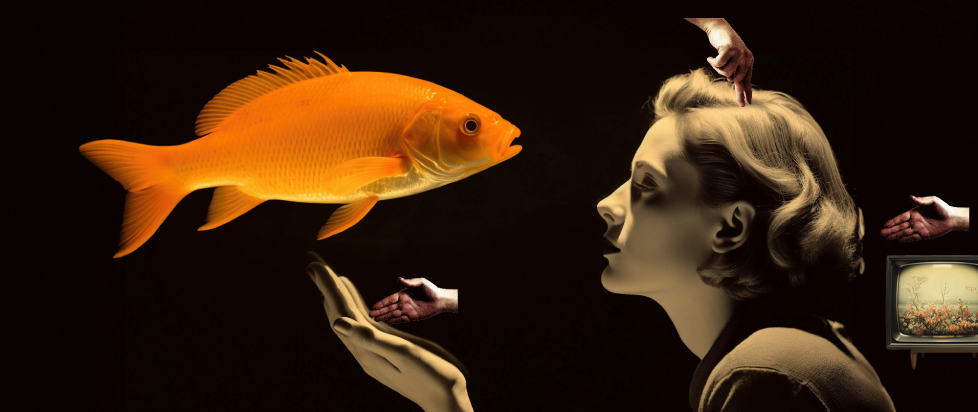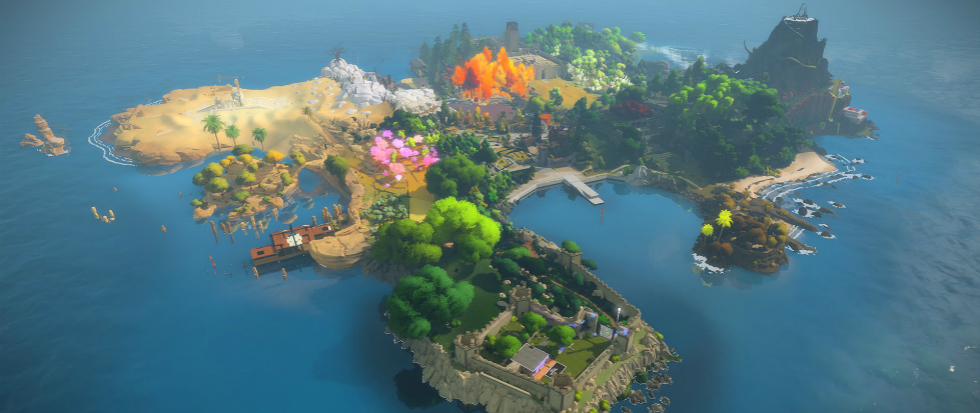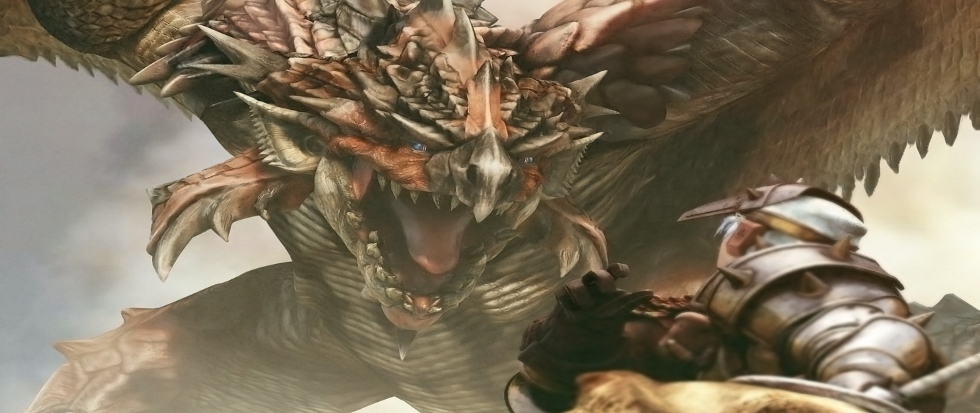
Puzzling-er and Puzzling-er
Puzzle games fascinate me. Each one is a high-wire act, demanding precarious balance. A puzzle solution can’t be immediately, insultingly obvious, but it also can’t seem so impossible at first glance that the player doesn’t know where to begin. In terms of pacing, the genre is all about buildup, about training the player to make greater and greater leaps in logic by syncing up their perception of the game world with the developer’s intent. Building confidence, even hubris, to the point where it can survive being punctured by later, more difficult conundrums.
And that’s if everything goes smoothly. The player may very well get stuck, their vision desynchronizing from the developer’s. At worst, their only path forward becomes thoughtless experimentation, trying anything and everything until something finally works, to little satisfaction. Nobody wants to feel like they solved something by accident.
Hints and difficulty options can help guide the player through a momentary desynchronization. But they’re also more work to include, with no guarantee that they’ll ever be consulted. The player might just as soon give up altogether. And if the hints call too much attention to themselves, they become irritating and alienating in their own right, the equivalent of someone clearing their throat at you while standing behind you in line.
How, I wonder, do completion stats stack up for puzzle games compared to other genres? Do most players give up at a few common roadblocks? Do the really good puzzle games pull more players than normal through to the very end, able to string them along with the pure thrill of discovery and positive reinforcement?
Like the sheer variety of puzzle mechanics across the medium, there’s hardly any single solution. The following four puzzle games all approach difficulty and the potential for failure in distinct ways.
HANDS
yumehiko | free in browser (Itch)
In Hands, we control a cut-out photo of a hand that strolls forward on its fingertips, like Thing from The Addams Family. We must reach another disembodied hand and shake it in order to advance, always against the backdrop of a surreal collage: goldfish, mountains, clocks, ocean waves. Hands was submitted to a game jam themed around deception, so the obvious destination is not necessarily the correct one. Often, our hand’s demise upon touching a spike pit or a huge, undulating goldfish will alter the state of the world, like causing more hands to sprout like flowers through a crack in the pavement. Beyond the superb oddness of its art, every aspect of Hands feels thoughtfully constructed, from the catchy EDM soundtrack to the satisfying little “click” that accompanies each handshake.
To describe any more would spoil the whole brief, cryptic experience. I peeked at the comments on the Itch page for an idea of how to proceed, I admit. I was reluctant to do so. But when played in a browser, the blow to my pride softens; Hands becomes an art object deciphered by a community, all of them looking on and leaving advice behind. Keep an eye out (or, at least, an eye on the comments) for a minigame easter egg that totally re-contextualizes the game’s simple walking controls.
BILKINS’ FOLLY
Webbysoft | Paid (Steam / Switch / PlayStation / GOG)

Full of riddles and treasure maps, Bilkins’ Folly is a comedic island-hopping adventure centered on Percival Bilkins and his very good boy, Drayton the dog. Viewed from an overhead camera, the game features no combat of any kind, concerned instead with using the environment and a variety of distinct puzzle mechanics to seek pirate gold. We match blocks to pick locks, pull switches to move minecarts, and catch fish by gliding along a grid. Above all, we scribble lines and X’s on the main map by clicking on the pencil and ruler to plot where to dig, because we can dig almost anywhere. Unlike other games, Bilkins’ Folly does not reveal its hidden stashes with obvious map markers or glittering scenery. Instead, it leaves us to scrutinize vague descriptions, chicken-scratch drawings, and cryptic directions to track down the sweet spot that each X is intended to mark.
It’s all wrapped up in a Monkey Island-esque story, full of sardonic characters with oddball expectations and goofy customs about what happens when, say, a person accepts the gift of a fresh-caught fish. Bilkins’ Folly is the vision of piracy we imagine as kids, drawing maps and digging in the dirt. A sense of adventure. There’s even a button to start counting the number of paces taken from a certain point, aka the only reliable measurement employed by any self-respecting sea dog.
Be warned,though: despite its light tone, Bilkins’ Folly is very much not kidding around with its puzzles on even the normal difficulty. Sometimes, this will stop the pacing dead in its tracks (or, well, its paces), though the game also features open areas for interludes of free-form treasure-hunting. I took this, at first, as a surprising amount of optional playtime for a modest-seeming indie game. But rather than only providing fodder for completionists, the additional treasures slyly circumvent the difficulty found elsewhere, allowing us to set aside a puzzle that stumps us and try another.
THE GIRAFFE WORLD
Quentin Delvallet | Free in browser (Itch); Free (Steam)

The Giraffe World is a distinct charmer, each puzzle screen opening with a 3-D view of an otherwise top-down, 2-D environment. We play a giraffe, behaving as any normal giraffe behaves by stretching its neck forever in search of discarded hats, which all stack on top of each other on its giraffe head in its giraffe portrait at the corner of the screen. The neck, however, takes up space – we can loop back over it once from certain angles, but otherwise we’re essentially creating roadblocks while pushing objects around in pursuit of our wayward headgear, like a mashup of Snake and sokoban.
Unlike the difficulty of Bilkins’ Folly or the more mind-bending qualities of Hands, The Giraffe World is not meant to be a challenging affair. Many of the puzzles feature multiple solutions amid themed backdrops and an assortment of mechanics that are used for just a few screens before they’re discarded for something new. But there is no “undo” button to take back a bad move. The only option is to start over again, with every restart prompting the sheep, fish, and other critters in the puzzle background to encourage us in spoken, squeaky French audio: “I’m proud of you” or “I believe in you” or “you’re such a good giraffe.” Some games soften the blow of needing to restart by making it instantaneous, or ensuring the music isn’t interrupted – The Giraffe World opts to make it adorable.
HOWL
Mi’pu’mi Games | Paid (Steam / Epic / Switch / PlayStation / Xbox)

Howl casts us as a lone girl, a Prophet whose deafness protects her from the werewolf cries that turn other humans all hairy, toothy, and bloodthirsty. Moving one square at a time across bite-sized maps rendered like watercolor on paper, she is armed with only three arrows and a limited number of actions per round, with each single action prompting a response move from any canine monstrosities alerted to her presence.
Here’s where things get complicated: the Prophet’s additional abilities are all based on consecutive actions, so the second action in a round lets her toss a smoke bomb and the fourth action looses a close-range blast of psychic force. The game thus encourages us to be bold, committing to moves in advance with only a slight indication of where each wolf intends to travel and the path it might take to get there (the AI, we are told, takes the shortest path and favors horizontal movements over vertical ones). We can also end rounds early, which ensures the Prophet will move first at the next round but also triggers certain events like smoke dissipating, backup being called, and fire (which can otherwise be traversed to no consequence) damaging whoever occupies a burning square at round’s end.
With so many variables at work, Howl’s maps do not feature rigid solutions, and there’s perhaps an argument to be made that it’s more of a turn-based strategy game than an outright puzzler. But each level has a “par” number of rounds and a maximum number of enemies to defeat, both of which provide currency to learn new moves or unlock new paths on the world map. Howl is essentially a puzzle game if we choose to engage with it as one; it never demands a perfect session even as its par goals constantly dangle the potential for perfection in front of us. And even there, further challenges are left wholly self-imposed – coming in below par and defeating all enemies are measured as separate goals, offering no reward except convenience for accomplishing both at once (on levels where it’s even possible to do so, that is). Howl approaches failure with a sort of choose-your-own difficulty system, for however much or however little we want to commit.
———
Steven Nguyen Scaife is a freelance writer and editor who will not pick a pop culture lane. He and his cat are marooned in Ohio still. He’s on Twitter and Bluesky.





